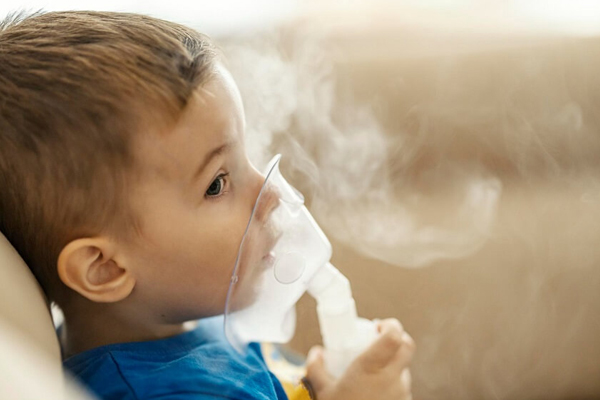Nebulisation

Nebulisation
What is Nebulisation?
Nebulisation is a medical treatment that involves using a nebuliser to convert liquid medication into a fine mist or aerosol that can be inhaled directly into the lungs. This method is particularly effective for delivering medications to patients with respiratory conditions, as it allows for rapid absorption and immediate therapeutic effects.
How Does Nebulisation Work?
The nebuliser consists of a compressor, a medication cup, and a mouthpiece or mask. The process typically involves the following steps:
- Preparation: Liquid medication is placed in the medication cup of the nebuliser. This medication may include bronchodilators, corticosteroids, or saline solutions, depending on the condition being treated.
- Activation: The compressor generates a stream of air that passes through the medication cup, turning the liquid medication into a fine mist.
- Inhalation: The patient inhales the mist through a mouthpiece or mask, allowing the medication to reach the lungs directly.
- Duration: A typical nebulisation session lasts about 5 to 15 minutes, depending on the medication and the nebuliser's settings.
Indications for Nebulisation
Nebulisation is commonly used to treat various respiratory conditions, including:
- Asthma: Helps relieve bronchospasm and reduces inflammation.
- Chronic Obstructive Pulmonary Disease (COPD): Assists in managing symptoms and exacerbations.
- Pneumonia: Delivers antibiotics or mucolytics to improve respiratory function.
- Cystic Fibrosis: Aids in clearing mucus from the lungs.
- Allergic Reactions: Provides quick relief from respiratory distress due to allergies.
- Bronchitis: Helps alleviate coughing and promotes airway clearance.
Advantages of Nebulisation
Nebulisation offers several benefits over other forms of medication delivery, such as inhalers or oral medications:
- Ease of Use: Nebulisers are generally easy to use, making them suitable for patients of all ages, including children and the elderly.
- Effective Delivery: The aerosolized medication reaches the lungs directly, providing rapid relief of symptoms and improved lung function.
- Larger Dose Capacity: Nebulisers can deliver higher doses of medication compared to standard inhalers, which may be beneficial in acute situations.
- Reduced Coordination Required: Unlike inhalers, which require proper technique and coordination, nebulisers allow for a more straightforward inhalation process.
- Comfortable for Patients: Nebulisation can be more comfortable for patients experiencing severe respiratory distress, as it allows for continuous inhalation.
Types of Nebulisers
Several types of nebulisers are available, each with distinct features:
- Jet Nebulisers: Use compressed air to generate the mist and are commonly used in hospitals and home settings.
- Ultrasonic Nebulisers: Use high-frequency sound waves to produce the mist, often quieter and more portable than jet nebulisers.
- Mesh Nebulisers: Utilize a vibrating mesh to create aerosol particles and are compact and portable, making them convenient for use outside the home.
Potential Side Effects
While nebulisation is generally safe, some patients may experience side effects, including:
- Coughing: A common reaction as the medication enters the airways.
- Throat Irritation: Mild irritation may occur, particularly with certain medications.
- Nausea: Some patients may experience nausea if the medication is not well-tolerated.
- Increased Heart Rate: Certain bronchodilators can cause transient increases in heart rate or blood pressure.
Precautions
- Proper Cleaning: It is essential to clean the nebuliser equipment regularly to prevent infections and ensure optimal performance.
- Follow Medical Advice: Always use medications as prescribed by a healthcare professional, including the correct dosage and frequency of nebulisation.
- Monitor for Side Effects: Patients should inform their healthcare provider of any concerning side effects or lack of improvement in symptoms.